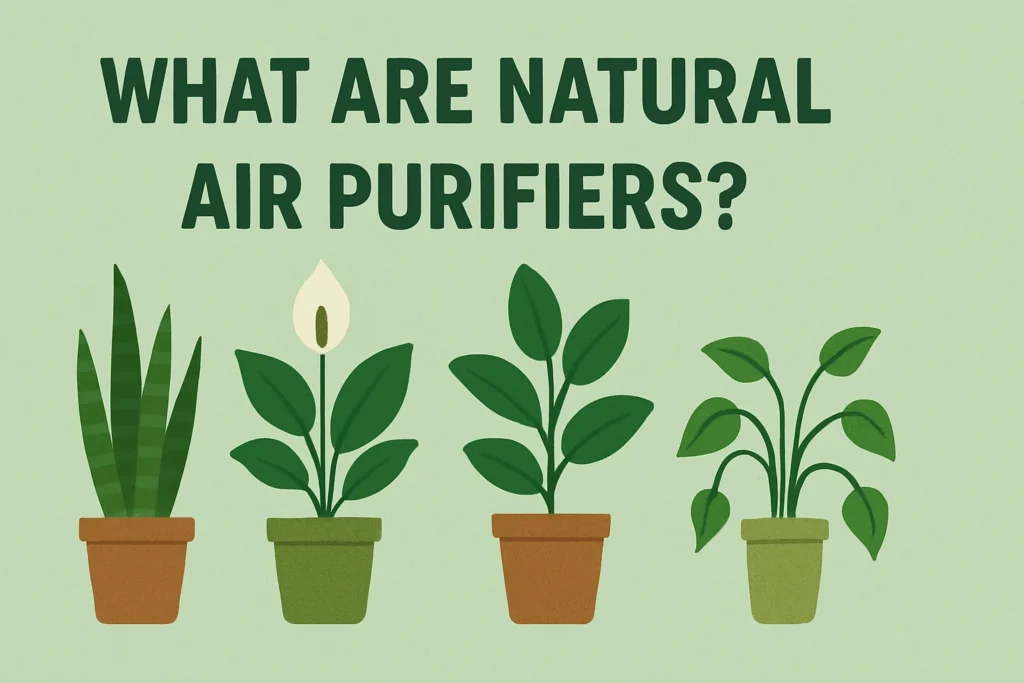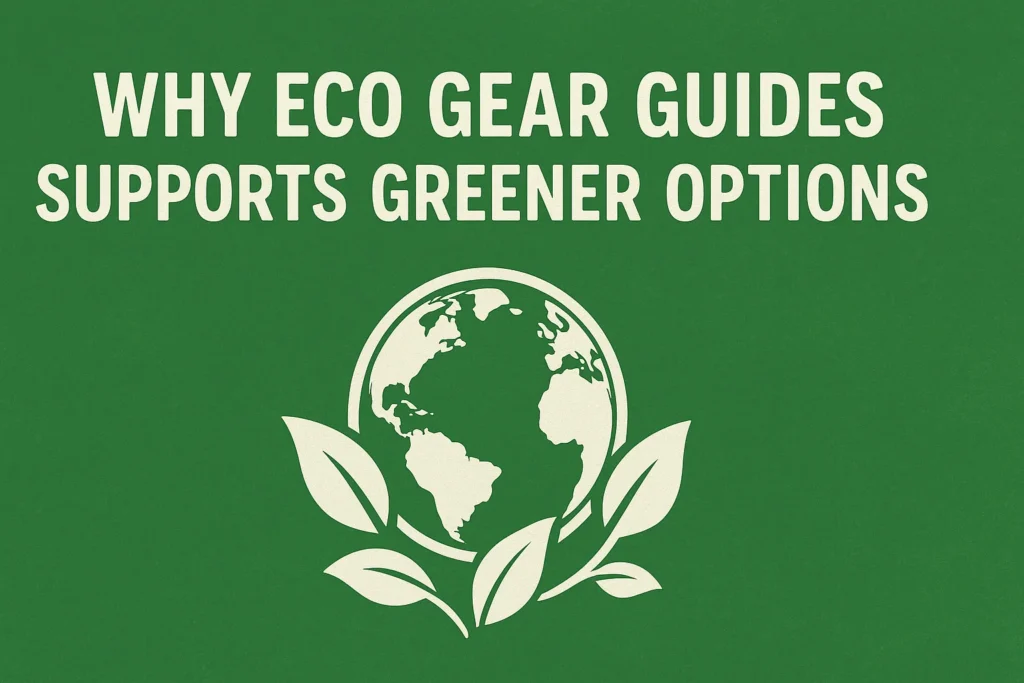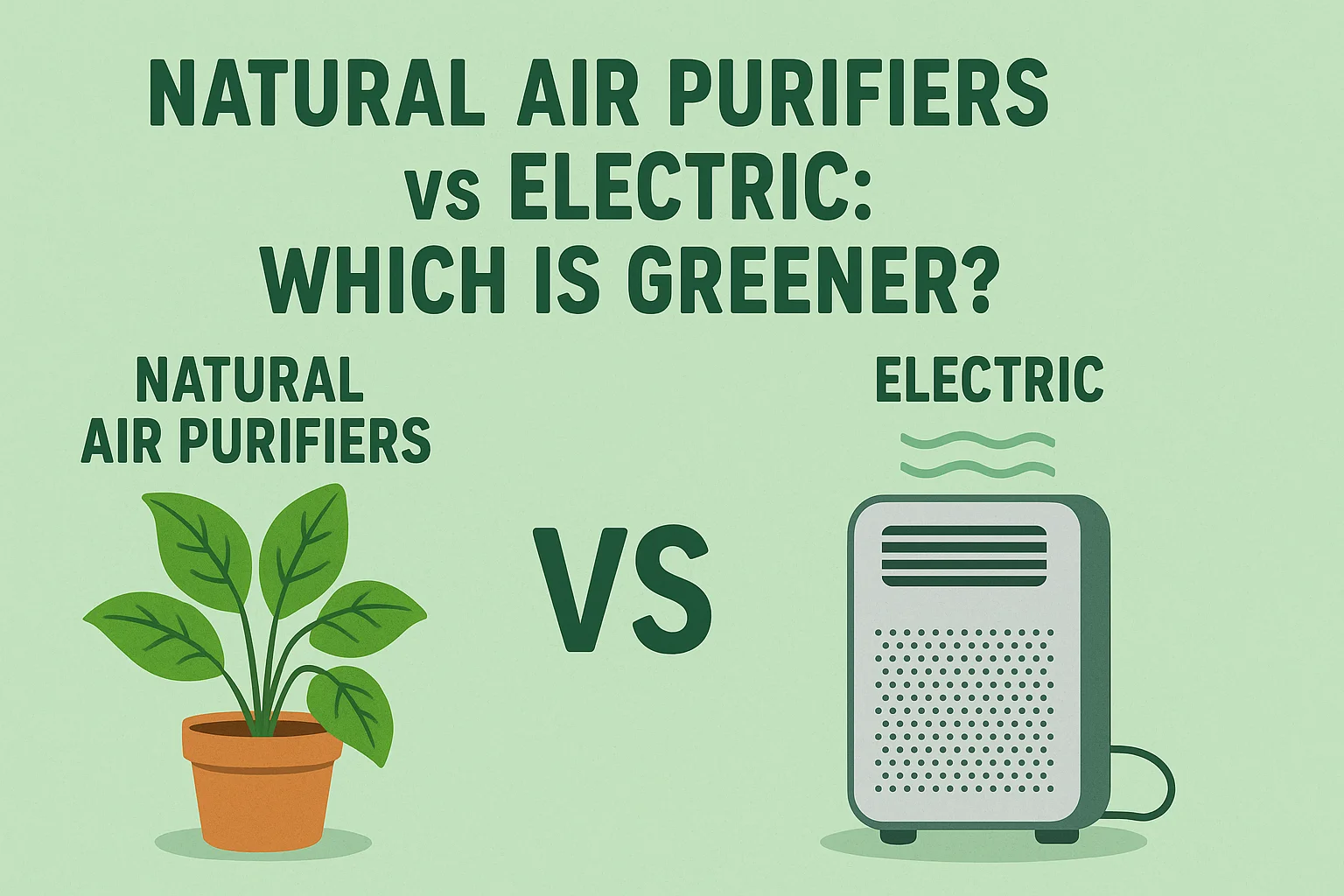Breathing Clean vs Living Green: Can You Do Both?
We all want cleaner indoor air—but have you ever thought about the environmental cost of how you purify it? In the world of air cleaning, two contenders dominate the conversation: natural air purifiers and electric air purifiers. But when it comes to being truly eco-friendly, which one deserves the green crown?
In this detailed guide, Eco Gear Guides explores everything from energy usage and health impact to sustainability and real-world costs, so you can make the best choice for your home—and for the Earth.
🌱 What Are Natural Air Purifiers?

Natural air purifiers work without electricity or synthetic components. They include:
- Air-purifying plants like Aloe Vera, Snake Plant, and Peace Lily
- Activated bamboo charcoal bags
- Himalayan salt lamps
- Beeswax candles
- Essential oils and natural diffusers
These solutions cleanse the air using natural filtration and absorption methods, helping you live sustainably without sacrificing air quality.
⚡ What Are Electric Air Purifiers?
Electric air purifiers rely on technological systems like:
- HEPA (High Efficiency Particulate Air) filters
- UV-C lights for sterilization
- Ionizers that charge airborne particles
- Carbon filters for odor removal
These devices require electricity and routine filter replacements, often made from plastic or synthetic materials.
📊 Natural vs Electric: The Eco Face-Off
Here’s a direct comparison:
| Feature | 🌿 Natural Air Purifiers | ⚡ Electric Air Purifiers |
|---|---|---|
| Energy Use | None | 30W to 100W+ |
| Pollution Output | Zero | Ozone (in some models) |
| Material Sustainability | Biodegradable | Mostly synthetic & plastic |
| Carbon Footprint | Extremely low | Moderate to high |
| Maintenance Needs | Minimal | Regular filter replacements |
| Cost Over 1 Year | PKR 2,000–6,000 | PKR 18,000–45,000 |
| Instant Results | No (gradual) | Yes (fast) |
🏠 Real-Life Example: Islamabad Home Test
To evaluate the difference, Eco Gear Guides ran a two-week test in a medium-sized Islamabad apartment.
- Living Room: 1 large electric HEPA air purifier
- Bedroom: 2 Snake Plants, 1 bamboo charcoal bag, 1 salt lamp
Results:
- The electric purifier reduced dust faster but added PKR 1,100 to the energy bill in 14 days.
- The natural setup improved air freshness gradually, with zero energy cost.
The homeowner preferred the natural environment in the bedroom and switched the electric purifier to timed usage only.
💰 Cost & Energy Analysis
| Cost Type | Natural Purifiers | Electric Purifiers |
|---|---|---|
| Upfront Cost | PKR 2,000–5,000 | PKR 10,000–35,000 |
| Energy Use (Yearly) | 0 kWh | 300–800 kWh |
| Maintenance | None to low | PKR 4,000–10,000/year |
| Lifespan | 6 months–5 years | 1–3 years (device), filter ~6 months |
| Environmental Impact | Low | Moderate to high |
🧠 Eco Gear Tip: Always check whether the electric purifier includes recyclable filters and low-energy modes.
🌍 Environmental Impact Breakdown
| Criteria | 🌿 Natural | ⚡ Electric |
|---|---|---|
| Carbon Emission | ✅ Low | ❌ High |
| Reusability | ✅ High | ❌ Low |
| Energy Efficiency | ✅ Total | ❌ Limited |
| Waste Output | ✅ Minimal | ❌ Filter/E-waste |
| Planet-Friendly Materials | ✅ Yes | ❌ Rarely |
Natural air purifiers win nearly every category when it comes to planet health.
Read More : Eco-Friendly Bedroom Upgrades You Never Knew You Were Missing
🧠 Why Eco Gear Guides Supports Greener Options

At Eco Gear Guides, we review products through an environmental lens. Whether it’s air purifiers, solar devices, or reusable home goods—we prioritize sustainability, affordability, and real-life performance.
We don’t just want clean air—we want clean living.
Final Verdict: Which One’s Greener?
If you’re aiming for a low-carbon, low-cost lifestyle, then natural air purifiers are the greener choice.
They’re:
- Silent and soothing
- Biodegradable and low-waste
- Low maintenance and power-free
That said, electric purifiers are not your enemy. If someone in your home suffers from asthma, allergies, or lives near industrial zones, a smart HEPA purifier can be a healthy companion—just be mindful of energy usage and filter disposal.
Greenest Strategy: Use a hybrid system. Let nature purify where it can, and reserve electricity for high-need zones.
Read More : Smart Ways to Save Water with Eco Devices
Frequently Asked Questions
Q1: Can plants really clean indoor air?
Yes. Plants like Snake Plant and Areca Palm remove toxins such as formaldehyde, benzene, and carbon monoxide. NASA’s Clean Air Study backs this.
Q2: Is it bad to run electric purifiers all day?
It depends on the model. Most draw between 30–100 watts per hour, so running 24/7 increases electricity bills and emissions. Use a timer or run them only during high-pollution hours.
Q3: How long do charcoal bags last?
Bamboo charcoal bags last 6 months to a year and can be refreshed monthly by placing them in direct sunlight for a few hours.
Q4: Are salt lamps really effective air purifiers?
They may not replace a HEPA filter, but they do help with odor removal, mood, and slight air ionization.
Q5: Where can I find the most eco-friendly products?
Visit Eco Gear Guides for reviews, buying guides, and real-life tests of sustainable home essentials.


